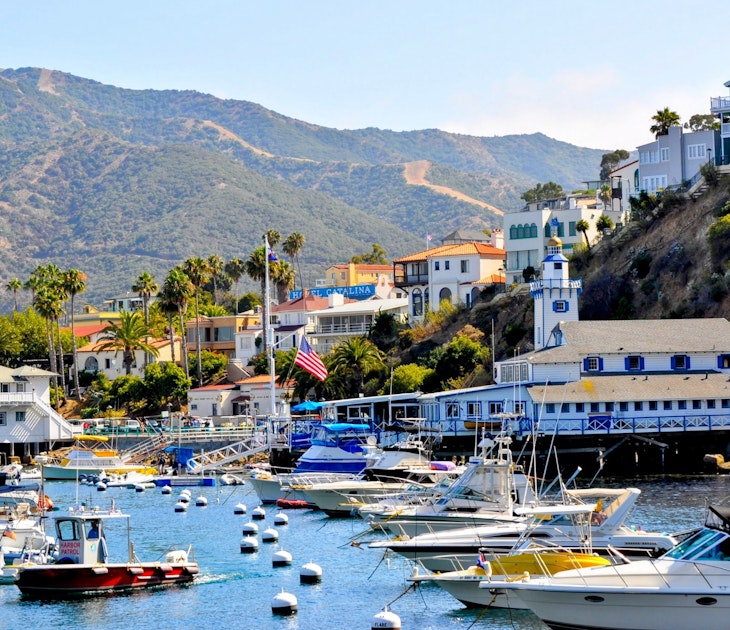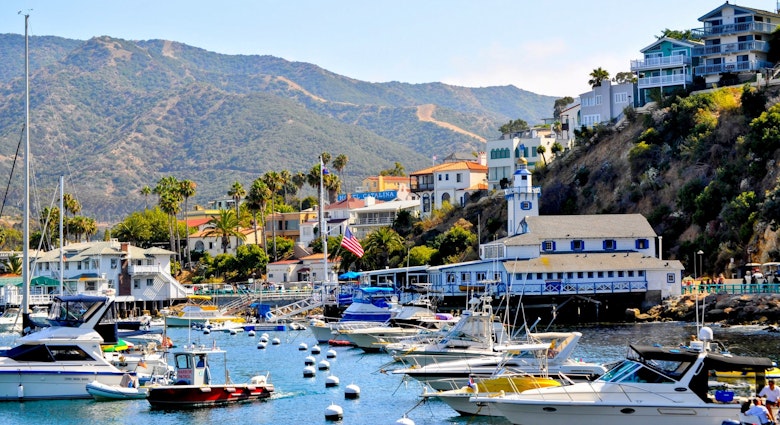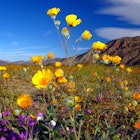Plants can be sexy. Raise your eyebrows if you will, but to a plant lover, certain plants possess an undeniable allure. And plant-love can make you do crazy things, like scaling a muddy cliff to snap a photo of an extremely rare tropical flower or travelling to a remote corner of eastern Oregon to look for a fern the size of a postage stamp. Not that I know anyone who's done those things.
If your mind is heading straight to the gutter, stop right there; sexy plants don't have to be phallic or vulvic in appearance. It takes more than a plant having a passing resemblance to human genitalia to get botanists hot under the collar. When botanists think ‘sexy’ they think rare, unusual, perplexing, evolutionarily isolated, hard to find... But more than that, they dream of finding something that would make other botanists jealous if spotted in the wild. These species tend to be found in interesting locales around the world, which is great news for plant lovers who also love travel.
If you were on a mission to track down the sexiest plants in the world - a botanist's dream trip - here are eight plant species and corresponding destinations you should add to your list:
1. Welwitschia mirabilis – Welwitschia (Namibia & Angola)
A contender for the world’s most bizarre plant, a Welwitschia plant looks like someone put a giant Shrek balloon through a shredder and dumped it unceremoniously in the middle of the Namib Desert. In an environment that is otherwise nearly devoid of plants, Welwitschia survives by absorbing moisture from morning fog. An individual plant only produces two leaves over the course of its long life (some plants are thought to be at least 1000 years old), the leaves splitting over time to produce the unusual ribbon pile appearance. Although threatened by collectors, Welwitschia can still be seen in the wild in Namibia and Angola.
Welwitschia, Namibia. Photo by intelligentinfo
2. Sequoiadendron giganteum – Giant sequoia (California)
Size doesn't matter, right? Oh, that old line. Tell that to General Sherman, or to the people staring slack-jawed at his awe-inspiring girth and towering heights in Sequoia National Park. The largest trees in the world by volume, giant sequoias are giant in every dimension. Those expecting to be wowed by the height are often surprised at how massive the base of an old-growth sequoia can be.
California also boasts the tallest tree in the world (Hyperion, a coast redwood), the oldest tree in the world (the Methuselah tree, a bristlecone pine), and the Klamath Mountains of northern California have the highest diversity of conifers anywhere in the world. A dedicated conifer fan could visit all four in just a short trip. (Bonus nerdy fact: use 'sequoia' in Scrabble for a chance to use a q and one of every vowel in the English language. Impress your friends.)
The base of General Sherman. Photo by Mike Baird.
3. Ophrys orchids in action– Bee orchids (Coastal Mediterranean)
Ooh baby, nothing says ‘sexy plant’ like orchid pseudocopulation. Certain groups of orchids, like the genus Ophrys, produce pheromone-like compounds to attract pollinators and have structures that visually (and convincingly) mimic the female of the pollinator species. An unsuspecting male bee buzzes by and gets pulled in by the scent and what looks like an attractive female’s back – but little does he know it’s just a ruse to deposit pollen on him so he can carry it over to the next flower that dupes him with its pseudo-feminine wiles. Encountering a bee orchid in the Mediterranean region isn’t rare, but catching an insect and flower getting all hot and pollen-covered is one of the plant world’s true pleasures. (Watch this nice video of pollination in action with Ophrys lutea).
Orchid or insect? Photo by Macropoulos.
4. Amorphophallus titanum – Titan arum (Sumatra, Indonesia)
How can you resist a plant whose name means ‘giant misshapen penis’ and smells like a rotting corpse when it blooms? With a floral structure of Seussian proportions and appearance – the largest unbranched inflorescence of any plant – the sight of a titan arum in full bloom is almost too bizarre to believe. Now found in several botanical gardens around the world, the flowering of a titan arum is always an event. Also found in Sumatra is Rafflesia arnoldii, the plant with the largest single flower (as opposed to the grouping of many flowers in the inflorescence of the titan arum). Add both of these notches to your botanical bedpost, and you’ve got something to brag about.
Titan arum in bloom (with flies), UC Botanical Garden at Berkeley. Photo by Keoki Seu.
5. Ginkgo biloba in the wild – Maidenhair tree or Ginkgo (China)
One of the world’s most recognizable trees, known for its elegant fan-shaped leaves that turn brilliant yellow in the winter, it might surprise many to find out that Ginkgo might be surviving today entirely thanks to human intervention. Thought to be extinct in the wild, possibly wild populations were found on Tianmu Mountain in eastern China, but the high genetic uniformity in these populations have led some to conclude that they were not truly wild but instead planted and preserved by Buddhist monks over the past 1000 years. If this is true, the story becomes even more enchanting.
Ginkgo leaves turning golden, Kew Gardens. Photo by RBG Kew, Flickr.
6. Apetahia raiateensis – Tiare apetahi (Ra'iatea, French Polynesia)
Extreme rarity, beauty, death and lust all rolled into one. The tiare apetahi is only found in one place in the world: on the very top of Mt Temehani on the island of Ra'iatea (nearby neighbor of Bora Bora in the Society Islands). Legend holds that a young girl of common birth fell madly in love with a handsome prince, and, unable to win his love, she climbed Mt Temehani, cut off her hand, buried it and died on the spot. Where her hand was buried, a flower bloomed. The pure white flowers of the tiare apetahi, with five petals reaching skyward are said to be the outstretched hand of the young girl, and the faint popping sound of the flowers opening is the crack of her breaking heart.
Tiare apetahi in bloom, Ra'iatea. Photo by 100zax, Wikimedia Commons
7. Nepenthes campanulata – Bell-shaped pitcher plant (Borneo)
Carnivorous plants are the femmes fatales of the plant kingdom, so it’s perhaps not surprising to find one on this list. The bell-shaped pitcher plant – part of the group that uses a pitfall trap filled with fluid to capture and drown prey – is endemic to Borneo. While you can find other pitcher plants in the jungles of Borneo, this species has a special allure to plant lovers. After fires destroyed the only known population of the species in East Kalimantan, it was thought to be extinct, only to be rediscovered nearly 15 years later hundreds of miles away in Sarawak’s Gunung Mulu National Park. Spotting one of these undead hotties in the wild would make any plant-lover’s year.
Pitcher of Nepenthes campanulata. Photo by JeremiahCP, Wikimedia Commons
8. Argyroxiphium sandwicense – Silversword (Hawaii)
An iconic plant of the Hawaiian Islands, the silversword in bloom in the stark otherworldly landscape of the Haleakala crater is a sight to behold. It's especially notable given that the silversword is monocarpic, meaning it flowers only once in a spectacular attempt to reproduce before the plant dies completely. One of the more remarkable stories in plant evolution, the silversword is part of a recent and diverse radiation of species in the Hawaiian islands derived from a single (and much less flashy) common ancestor from mainland North America. It may be tropical Hawaii, but if you ascend the heights of Haleakala to see silverswords (or make the trek to the even rarer subspecies on Mauna Kea), bring a jacket - cold winds whip the top of the volcano, and on certain days you might find silverswords in a snowdrift.
Silversword in bloom on Haleakala. Photo by Conor Dupre-Neary.
Andy Murdock is Lonely Planet’s US Digital Editor who also happens to be a botanist with a Ph.D. in Biology from UC Berkeley. And he likes plants, even the unsexy ones.
This article was first published in December 2011 and was refreshed in August 2012.
Looking for something sexier than a plant? Lucky for you, there are at least 960 non-botanical options in Lonely Planet's 1000 Ultimate Sights.




















